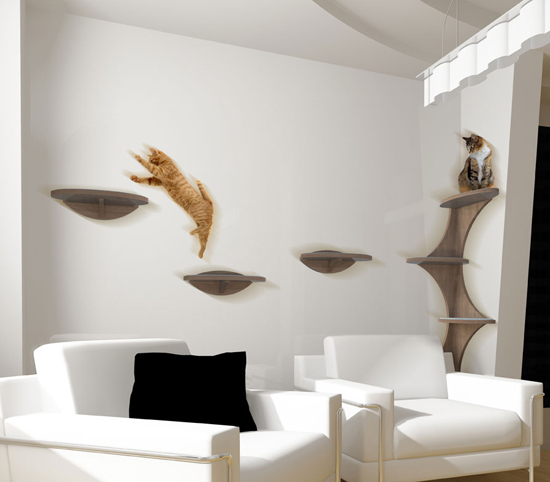Letting Your Cat Go Outdoors Without all the Risks.
As I mentioned in my last post, outdoor cats face significant risks from being killed by vehicles, dogs, wildlife like coyotes and disease. Cats also kill wildlife. So how can we provide our cats with the benefits of being outdoors without all the risks?1) Harness Training
 |
| Here is my cat hanging out with the dog on the patio (above) and in the garden (below) |
 Eventually, the harness started to signify that she was going outdoors (a life reward) so she started to develop a positive association with the harness because she love do hang out in the yard with us. We put the harness on a leash and tether the leash to piece of furniture while we hang out outside. Tethered animals should never be left alone unsupervised. They can get tangled in the leash.
Eventually, the harness started to signify that she was going outdoors (a life reward) so she started to develop a positive association with the harness because she love do hang out in the yard with us. We put the harness on a leash and tether the leash to piece of furniture while we hang out outside. Tethered animals should never be left alone unsupervised. They can get tangled in the leash.This method allows the cat to get sunshine and explore the outdoors supervised. Special, lightweight cat harnesses can be found at most pet stores. Many come with a light weight leash. The main thing is to check for a snug (but not overly tight fit) so the cat cannot slip out of the leash. I make sure two fingers can easily slip under the straps with no extra room. Cats are more flexible than dogs and can easily wiggle out of harnesses.
2) Outdoor Cat Runs
You can also construct window perches and cat runs that allow your cat to have access to the sunshine and outdoors. There is one house in Beverly Hills where the owners have constructed an elaborate series of ramps and runs that encircle the outside of their home. I had the opportunity to see this house during the Theodore Payne Garden Tour a few years ago. The family lives in a hilly area of Beverly Hills that is frequented by hawks, coyotes and even the occasional bobcat. Not a hospitable place for outdoor kitties. The pictures below do not convey how elaborate and extensive this cat run system is.Creating 3-Dimensional Indoor Environments
To me, a major difference between cats and dogs is that a dog's world is more "two-dimensional" whereas a cat's world is more "three-dimensional." Cats like to climb and be in high places. Much to many owners' chagrin, cats take advantage of ledges, shelves, countertops and the tops of refridgerators often knocking over belongings (usually made out of glass or china) in the process.You can construct a series of perches and ramps inside the cat's room to make it more interesting. Cat trees provide cats with different levels. Moreover, cat furniture is often covered with carpet so they also serve as a scratching post. You can also provide cat shelves where cats can perch. Here are some inspired and creative examples of enriching your cat's indoor environment without damaging your belongings:
 |
| This cat shelf design is discussed at http://www.home-designing.com/2009/03/spaces-for-pets-at-home |
 |
| For more info on this DIY project go to: http://www.moderncat.net/2008/08/17/diy-cat-shelves-for-a-modern-loft/ |
These projects can be inexpensive if you are handy with a power drill and leveler. You can get basic particle board shelving from the hardware store and carpet remnants are fairly inexpensive.
So get creative and think of ways to keep your kitty entertained!
Los Angeles Dog Training: www.pawsitivefeedback.com



Indoor only cats can benefit from the 3D home. However in reality how many cat owners would go to these lengths to provided enough stimulation for their cats? In the UK most flats are small and do not have the space for shelves and high scratching posts, let alone a tree.Owners will tell you their cat is ok mostly because it has become inactive and doesn't show any signs of wanting to go out. I think these cats give up due to lack of stimulus and depression. Nothing can replace the variety and stimulation of the natural environmnet. If owners are worried about outside dangers they should construct a large outside pen. Most areas of the UK are fine for free ranging cats providing they are neutered, vaccinated and microchipped. Many live well into old age and up to 20 years with a full natural life!
ReplyDeleteThank for sharing this. A friend of mine had already told me about Sirlin.net but the others are mostly new! Thanks again. ( http://dysonanimaldc41.com )
ReplyDelete